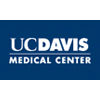预约演示
更新于:2025-08-29
Andrographolide
穿心莲内酯
更新于:2025-08-29
概要
基本信息
原研机构- |
非在研机构 |
权益机构- |
最高研发阶段批准上市 |
首次获批日期- |
最高研发阶段(中国)批准上市 |
特殊审评- |
登录后查看时间轴
结构/序列
分子式C20H30O5 |
InChIKeyBOJKULTULYSRAS-OTESTREVSA-N |
CAS号5508-58-7 |
关联
14
项与 穿心莲内酯 相关的临床试验ITMCTR2025001085
A single-center randomized standard-controlled open-label clinical study of the efficacy and safety of Andrographolide Drops in the treatment of patients with mild to moderately active ulcerative colitis
开始日期2025-06-01 |
申办/合作机构 |
ChiCTR2300071970
Effects of Andrographolide on blood pressure and vascular endothelial function in hypertension patients
开始日期2023-01-10 |
申办/合作机构 |
TCTR20210906002
Prospective study of Andrographolide and Favipiravir versus Favipiravir Monotherapy to prevent severe pulmonary involvement in patients with COVID-19
开始日期2021-09-16 |
申办/合作机构- |
100 项与 穿心莲内酯 相关的临床结果
登录后查看更多信息
100 项与 穿心莲内酯 相关的转化医学
登录后查看更多信息
100 项与 穿心莲内酯 相关的专利(医药)
登录后查看更多信息
2,290
项与 穿心莲内酯 相关的文献(医药)2025-12-31·PHARMACEUTICAL BIOLOGY
Non-linear oral bioavailability and clinical pharmacokinetics of high-dose
Andrographis paniculata
ethanolic extract: relevant dosage implications for COVID-19 treatment
Article
作者: Rangkadilok, Nuchanart ; Puranajoti, Porranee ; Songvut, Phanit ; Panomvana, Duangchit ; Akanimanee, Jaratluck ; Suriyo, Tawit ; Satayavivad, Jutamaad ; Pholphana, Nanthanit
AIM:
Insufficient quality control and limited dissolution of Andrographis paniculata extract capsules restricts their bioavailability and hinder the clinical use for treating mild coronavirus disease 2019 (COVID-19) patients.
OBJECTIVE:
This study aims to investigate pharmacokinetics and safety of high-dosage A. paniculata ethanolic extract (equivalent to 180 or 360 mg/day of andrographolide), relevant dosages used for mild COVID-19 treatment.
METHODS:
An open-label, single-dose, and repeated-dose conducted in healthy volunteers. Subjects received capsules containing ethanolic extract equivalent to andrographolide dosage of either 60 or 120 mg per dose, taken every eight hours daily (totaling 180 or 360 mg/day). Safety was assessed through blood chemical analysis and adverse event monitoring after 7 days of ethanolic extract administration.
RESULTS:
Pharmacokinetics of ethanolic extract indicated low plasma levels of the major diterpenoids. The maximum plasma concentration (Cmax) of andrographolide did not exhibit a dose-proportional increase, reaching 6.44 and 11.62 µg/L for single and repeated doses of 60 mg/day, respectively. Doubling the dose (120 mg/day) only resulted in slightly higher Cmax (6.97 and 15.03 µg/L for single and repeated doses, respectively). Safety evaluation revealed mild, transient adverse events, but all parameters remained within normal ranges.
CONCLUSIONS:
This study highlights limitations in the pharmacokinetics of the ethanolic extract of A. paniculata. It indicated non-linear proportionality in the oral bioavailability of andrographolide. These findings suggest that current extraction process of ethanolic extract may hinder its effectiveness. Further research is warranted to explore alternative extraction methods or formulation developments that can enhance the bioavailability of andrographolide and its potential therapeutic effects for COVID-19 treatment.
2025-11-01·BIOMATERIALS
An advanced inhalable dry powder, mucus-penetrating aerosol platform: Bridging Andrographolide delivery with clinical translation
Article
作者: Lu, Min ; Cheng, Decui ; Wang, Xiaoli ; Tian, Rui ; Tan, Ruoming ; Wei, Li ; Fan, Huizhen ; Wu, Mei X ; Dong, Ruonan ; Qu, Hongping ; Yan, Xiangqun ; Pan, Tingting ; He, Shiyuan
Effective aerosol drug delivery remains a challenge for treating pulmonary diseases due to physiological barriers such as mucus accumulation, biofilm formation, and rapid macrophage clearance. Here, we developed an inhalable honeycomb-like microsphere (HCLplga-Ab) aerosol platform using FDA-approved poly(lactic-co-glycolic acid) (PLGA) and a pore-forming agent. The platform encapsulates Andrographolide, a bioactive compound derived from traditional Chinese medicine, together with a chitosan-ambroxol coating to achieve mucus penetration, sequential drug release, and prolonged retention in the lungs. The large geometric diameter (∼10-15 μm) combined with an optimal aerodynamic size (∼2.57 μm) ensures deep lung deposition while evading alveolar macrophage clearance. In murine models of acute lung injury (ALI), bacterial pneumonia (Klebsiella pneumoniae), and fungal pneumonia (Candida albicans), HCLplga-Ab demonstrated enhanced mucus penetration and biofilm destruction, uniform and prolonged drug retention in the lungs, and significant reduction in inflammation and pathogen burden. This versatile platform bridges traditional medicine with modern aerosol technology, offering a promising solution for respiratory disorders and clinical translation.
2025-11-01·CELLULAR SIGNALLING
Paederia scandens-derived exosome-like nanoparticles as a delivery system for andrographolide to treat ulcerative colitis
Article
作者: Zhou, Donghai ; Demidchik, Vadim ; Lei, Xianglan ; Li, Yan ; Peng, Yuxuan ; Zhang, Yixin ; Lin, Yaqin
Ulcerative colitis (UC) is a chronic inflammatory bowel disease characterized by relapsing colon inflammation. Side effects and drug resistance limit current therapies. Andrographolide (AG), an NF-κB pathway inhibitor, shows promise in UC treatment but suffers from poor oral bioavailability. In this study, Paederia scandens-derived exosome-like nanoparticles (P-ELNs) were used as a delivery system to enhance the therapeutic efficacy of AG in UC. P-ELNs were extracted from Paederia scandens leaves and characterized for size, zeta potential, and morphology using transmission electron microscopy (TEM) and nanoparticle tracking analysis. AG was loaded into P-ELNs (AG-P-ELNs), and the complex was characterized for encapsulation efficiency using high-performance liquid chromatography (HPLC). The anti-inflammatory effects of AG, P-ELN, and the AG-P-ELNs complex were assessed in LPS-stimulated RAW264.7 macrophages (in vitro) and in a dextran sulphate sodium (DSS)-induced colitis mouse model (in vivo). According to the results, AG-P-ELNs demonstrated a high encapsulation efficiency of 38.64 % and a stable dispersion system with a zeta potential of -38.55 mV, indicating good colloidal stability. In vitro, AG-P-ELNs significantly reduced the production of pro-inflammatory cytokines IL-1β, IL-6, IL-18 and TNF-α, promoting M1 macrophage polarized to M2. In vivo, AG-P-ELN treatment ameliorated DSS-induced colitis, normalized colon length, and mitigated inflammatory cell infiltration. The AG-P-ELN group showed the lowest NF-κB, NLRP3, and iNOS expression, suggesting a synergistic therapeutic effect in modulating macrophage polarization and inflammation. P-ELNs effectively enhance the bioavailability and therapeutic efficacy of AG in treating UC by improving its solubility, stability, and cellular uptake while modulating macrophage polarization and inflammation. This study provides a novel approach for the delivery of AG and highlights the potential of plant-derived nanoparticles in inflammatory bowel disease management.
27
项与 穿心莲内酯 相关的新闻(医药)2025-08-24
·摩熵医药
注:本文不构成任何投资意见和建议,以官方/公司公告为准;本文仅作医疗健康相关药物介绍,非治疗方案推荐(若涉及),不代表平台立场。任何文章转载需要得到授权。
近日,以岭药业发布公告称其开发的中药1.1类新药小儿连花清感颗粒提交的新药上市申请(NDA)获受理,该药品用于治疗小儿急性上呼吸道感染(风热感冒证),具有清感解表、宣肺泄热功效,可改善发热、鼻塞、咽喉肿痛、咳嗽等症状。
中药创新药龙头成绩单:10款获批+4款冲刺
以岭药业作为国内创新中药龙头企业之一,近年来在新药研发上成果斐然。摩熵医药数据显示,截至目前其已有10款中药创新药在国内获批上市,包括参松养心胶囊、芪防鼻通片、芪苈强心胶囊、养正消积胶囊、连花清咳片、连花清瘟胶囊、通络明目胶囊、乳结泰胶囊、解郁除烦胶囊、益肾养心安神片。
以岭药业中药创新药批文信息
图片来源:摩熵医药中国药品批文数据库
此外,还有4款中药新药提交上市申请,除了小儿连花清感颗粒,还有用于治疗慢性胆囊炎的柴黄利胆胶囊(1.1类)、治疗类风湿关节炎的芪桂络痹通片(1.1类),以及古代经典名方中药复方制剂半夏白术天麻颗粒。同时,还有连花清咳颗粒、藿夏感冒颗粒、参蓉颗粒、柴芩通淋片等处于II期临床。
冰火两重天:参松养心胶囊年销20亿,连花清瘟大幅缩水
在上市中药创新药中,参松养心胶囊在临床上广泛用于心血管疾病的辅助治疗,尤其适用于气阴两虚兼心脉瘀阻型心律失常患者,2024年在全国医院终端市场的销售额超20亿元,持续巩固其细分领域龙头地位;芪苈强心胶囊在临床上常用于治疗慢性心衰,2024年在医院终端市场的销售额超15亿元,较前几年呈现显著扩张态势。而曾因抗疫表现受到关注的连花清瘟胶囊,2024年医院终端销售额仅3.33亿元,不仅较上年下滑25.12%,更较2021年超12亿元的销售峰值缩水近四分之三,市场表现呈现断崖式下跌。
芪苈强心胶囊医院终端市场销售趋势
图片来源:摩熵医药全终端医院销售数据库
摩熵医药数据库显示,目前,以岭药业拥有50款中成药的生产批文(在使用),拥有17个专利中药品种。其中通心络胶囊/片、参松养心胶囊、芪苈强心胶囊、连花清瘟胶囊/颗粒/片、津力达颗粒、养正消积胶囊、夏荔芪胶囊、连花清咳片、解郁除烦胶囊和益肾养心安神片、通络明目胶囊11个品种进入了国家医保目录;5个品种通心络胶囊、参松养心胶囊、连花清瘟胶囊/颗粒、芪苈强心胶囊、津力达颗粒进入了国家基药物目录。
中药创新药“百家争鸣”,康缘、天士力强势布局
近年来,中药创新药迎来了快速发展期。2025年以来,已有小儿黄金止咳颗粒、芪防鼻通片、复方比那甫西颗粒、小儿牛黄退热贴膏、养血祛风止痛颗粒、参蒲颗粒等多个中药创新药获批上市。摩熵医药数据库显示,2024年共有16个中药品种获批上市,其中3个为1.1类创新药,9个古代经典名方,还有4个为港澳台外用中成药内地上市。从治疗领域来看,呼吸系统用药品种数最多,占4个品种,其次是血液、皮肤和肌肉-骨骼系统各有3个品种上市,消化道、生殖泌尿系统和神经系统各有1个品种获批。
在中药创新药的竞争格局中,众多药企纷纷发力。除了以岭药业,康缘药业也是行业内的佼佼者。2020年以来,康缘药业已陆续有8款中药新药获批上市,包括银翘清热片、参蒲颗粒2款1类中药创新药,筋骨止痛凝胶(6.1类)、以及玉女煎颗粒、温阳解毒颗粒、散寒化湿颗粒、济川煎颗粒、苓桂术甘颗粒5款古代经典名方中药复方制剂。
康缘药业中药新药项目进度追踪
图片来源:摩熵医药中国药品审评数据库
此外,康缘药业还有2款1.1类中药创新药的上市申请在审,29款中药1类新药处于临床阶段,覆盖妇科、呼吸科、骨科、儿科等多疾病领域。其中,杏贝止咳颗粒入选国家基药目录,散寒化湿颗粒、温阳解毒颗粒和玉女煎颗粒已进入最新公布的2025年国家医保目录及商保创新药目录调整初审名单。
作为国内中药龙头企业之一,天士力近年来持续加大研发投入。目前,其拥有中药生产批文167个(在使用),涉及117个品种,其中中药独家品种有17个。此外,天士力在研新药有106款,其中有一款中药1.1类新药安神滴丸、一款中药3.1类新药温经汤颗粒处于申报上市阶段;4款中药新药获批临床,包括3款1.1类新药复方丹参滴丸、九味化斑丸、安体威颗粒,及芪参益气滴丸(2.3类)。
天士力的中药产品已覆盖心脑血管、神经系统、呼吸系统、消化系统、妇科、儿科等疾病领域,代表品种有复方丹参滴丸、养血清脑颗粒、芪参益气滴丸、注射用益气复脉(冻干)、养血清脑丸、穿心莲内酯滴丸、藿香正气滴丸等。核心产品复方丹参滴丸是心脏病治疗用药领域的领军品牌,穿心莲内酯滴丸也位列清热解毒药榜首。(2025年3月,天士力控股股东正式变更为华润三九)
复方丹参滴丸医院终端市场销售趋势
图片来源:摩熵医药全终端医院销售数据库
总的来说,中药创新药领域目前呈现出百家争鸣的竞争态势。以岭药业的创新实践,是中药行业转型升级的缩影。随着政策的持续支持、技术的不断进步以及市场需求的进一步释放,中药企业正从“传统瑰宝”迈向“现代良药”,中药创新药有望在未来的医药市场中占据更加重要的地位。
END
本文为原创文章,转载请留言获取授权
近期热门资源获取
中国临床试验趋势与国际多中心临床展望-202505
2024年医药企业综合实力排行榜-202505
中国带状疱疹疫苗行业分析报告-202505
2023H2-2024H1中国药品分析报告-202504
数据透视:中药创新药、经典验方、改良型新药、同名同方的申报、获批、销售情况-202503
2024年中国1类新药靶点白皮书-202503
中国AI医疗健康企业创新发展百强榜单-202502
解码护肤抗衰:消费偏好洞察与市场格局分析-202502
2024年FDA批准上市的新药分析报告-202501
小分子化药白皮书(上)-202501
2024年中国医疗健康投融资全景洞察报告-202501
2024年医保谈判及市场分析报告-202501
近期更多摩熵咨询热门报告,识别下方二维码领取
联系我们,体验摩熵医药更多专业服务
会议
合作
园区
服务
数据库
咨询
定制
服务
媒体
合作
点击上方图片,即可开启摩熵化学数据查询
点击阅读原文,申请摩熵医药企业版免费试用!
引进/卖出上市批准
2025-06-03
·米内网
精彩内容米内网数据显示,2024年中国零售药店终端(城市实体药店+网上药店)中成药销售额超过1500亿元,同比略有增长。265个中成药销售过亿,其中有142个呈正增长(78个涨幅超10%)。从销售情况看,78个中成药合计销售额超过250亿元,超30亿大品种领跑;从增长情况看,20个中成药涨逾50%,其中7个为翻倍式增长;78个中成药中有30个为独家品种(含独家剂型),华润医药、国药集团、云南白药等均有2个及以上的品种在列。2024年中国零售药店终端销售过亿且增速超10%的中成药注:标红为独家品种(含独家剂型)来源:米内网综合数据库78个中成药涵盖12个治疗大类,包括24个呼吸系统疾病用药、10个泌尿系统疾病用药、9个消化系统疾病用药及补气补血类用药、7个五官科用药、5个骨骼肌肉系统疾病用药及肿瘤疾病用药等。全国医保及OTC产品占主流。78个中成药有54个已纳入2024全国医保目录(17个甲类,37个乙类),占比接近70%;61个为OTC产品(28个为双跨产品),占比约78%。6个超10亿大品种领跑,感冒中成药霸榜从78个中成药销售排行榜看,感冒灵颗粒以超30亿元领跑,复方阿胶浆(东阿阿胶独家)以超17亿元紧接其后,小柴胡颗粒以超14亿元排位第三。此外,蒲地蓝消炎片、云南白药气雾剂(云南白药独家)、潞党参口服液(山西正来制药独家)3个品种亦超10亿元。2024年销售额超过5亿元且增速超10%的中成药注:标红为独家品种来源:米内网综合数据库10个超5亿中成药涵盖3个治疗大类,其中有5个为呼吸系统疾病用药(4个感冒用药、1个清热解毒用药),3个为补气补血类用药(1个补血用药、2个补气用药),2个为骨骼肌肉系统疾病用药(均为消肿止痛用药)。有26家药企在销的感冒灵颗粒为家庭常备感冒用药,是由化药成分(对乙酰氨基酚、马来酸氯苯那敏等)及中药成分(三叉苦、金盏银盘、野菊花、岗梅等)组成的复方制剂。米内网数据显示,近年来该产品在中国零售药店终端感冒中成药销售排行榜中稳居首位,2024年其销售额突破30亿元,同比增长约14%。从企业排名看,华润三九龙头地位稳固,近年来占比均超过90%。近年来中国零售药店终端感冒灵颗粒销售情况(单位:万元)来源:米内网格局数据库有62家药企在销的小柴胡颗粒具有解表散热、疏肝和胃的功效,用于寒热往来、胸胁苦满、心烦喜吐、口苦咽干等。在中国零售药店终端感冒中成药产品排名中,小柴胡颗粒由2020年的第6位提升至2024年的第2位,市场份额由5.88%持续增长至11.12%。2024年该产品销售额突破14亿元,同比增长10.36%,白云山光华制药主导市场,华润三九紧接在后。近年来中国零售药店终端小柴胡颗粒销售情况(单位:万元)来源:米内网格局数据库有28家药企在销的蒲地蓝消炎片具有清热解毒、抗炎消肿的功效,用于疖肿、咽炎、扁桃体炎等,2024年在中国零售药店终端的销售额接近12亿元,同比增长17.27%,顶替蓝芩口服液,拿下清热解毒中成药销冠宝座。从该产品企业排名看,云南白药稳居首位,吉林福康药业大涨97.18%紧接其后,特一药业大涨131%排位第三。近年来中国零售药店终端蒲地蓝消炎片销售情况(单位:万元)来源:米内网格局数据库20个热销中成药大涨,7个为翻倍式增长78个中成药中有20个涨幅超过50%,其中7个为翻倍式增长(增速超过100%),包括补天灵片、苏合香丸、鸦胆子油口服乳液、七叶神安滴丸(云南金七制药独家)、复方苁蓉胶囊(广东罗浮山国药独家)、虫草清肺胶囊(国药普兰特独家)及蓝芩颗粒。2024年销售额过亿元且增速超50%的中成药注:标红为独家品种来源:米内网综合数据库从治疗大类看,20个中成药中,呼吸系统疾病用药有6个,补气补血类用药有3个,泌尿系统疾病用药、五官科用药、心脑血管疾病用药、肿瘤疾病用药、消化系统疾病用药各有2个,神经系统疾病用药有1个。补天灵片、复方苁蓉胶囊均为男科用药,可用于男性性功能障碍和性功能减退,2024在中国零售药店终端泌尿系统中成药产品排名中分别位列第10、第19。得益于网上药店的迅速放量,补天灵片2023年及2024年在中国零售药店终端的销售额增速均达四位数,2024年其销售额突破2亿元。牛黄清心丸(局方)、苏合香丸均为脑血管系统用药,2024在中国零售药店终端脑血管系统中成药产品排名中分别位列第4、第8。其中,有13家药企在销的苏合香丸为国家医保甲类品种,具有芳香开窍、行气止痛的功效,用于痰迷心窍所致的痰厥昏迷、中风偏瘫、肢体不利,以及中暑、心胃气痛等。得益于城市实体药店的快速放量,2024年该产品在零售药店的销售额突破1亿元,同比增长306.79%。近年来中国零售药店终端苏合香丸销售情况(单位:万元)来源:米内网格局数据库七叶神安滴丸为云南金七制药独家品种,具有益气安神、活血止痛的功效,用于心气不足,失眠,心悸等。2024年该产品在中国零售药店终端的销售额突破1亿元,同比增长279.25%,在神经系统中成药产品排名中,由2023年的第20位一跃至2024年的第2位。近年来中国零售药店终端七叶神安滴丸销售情况(单位:万元)来源:米内网格局数据库国药、华润等霸屏,健民、达仁堂上榜78个中成药中有30个为独家品种(含独家剂型,下同),涉及20余家药企(以集团计)。华润医药、国药集团、云南白药、广药集团、红云制药、真奥药业均有2个品种在列。在#国内中成药企业排名,华润医药、国药集团、云南白药、广药集团均名列前茅。涉及独家中成药数量达2个的集团华润医药2024年在中国零售药店终端有20余个中成药销售过亿,包括复方阿胶浆、血塞通软胶囊、三九胃泰颗粒、复方草珊瑚含片、养胃舒颗粒、骨通贴膏、益血生胶囊、复方丹参滴丸、穿心莲内酯滴丸、藿香正气滴丸、养血清脑颗粒等独家品种,其中2款补气补血中成药销售额增速均达两位数,复方阿胶浆销售额超17亿元。国药集团2024年在中国零售药店终端有10个中成药销售过亿,包括急支糖浆、虫草清肺胶囊、鼻窦炎口服液、玉屏风颗粒、鼻炎康片等独家品种,其中虫草清肺胶囊销售额接近2亿元,大涨168.49%。云南白药以传承百年的云南白药散剂为起点,不断开拓创新,逐渐形成了涵盖气雾剂、膏贴剂、酊剂、创可贴等多种产品形态的云南白药核心药品系列产品,专注于止血镇痛、消肿化瘀等伤科疼痛管理领域。云南白药2024年在中国零售药店终端有6个中成药销售过亿,云南白药气雾剂、云南白药膏涨幅均达两位数,在骨骼肌肉中成药产品排名中分别位列第2、第5。广药集团2024年在中国零售药店终端有14个中成药销售过亿,包括舒筋健腰丸、蜜炼川贝枇杷膏、养阴清肺合剂、消渴丸等独家品种,其中蜜炼川贝枇杷膏销售额突破3亿元,同比增长约17%;养阴清肺合剂销售额突破1亿元,同比增长51.35%。资料来源:米内网数据库注:米内网《中国城市实体药店药品终端竞争格局》,统计范围是:全国地级及以上城市实体药店,不含县乡村药店;《中国网上药店药品终端竞争格局》,统计范围是:全国网上药店所有药品数据,包括天猫、京东等第三方平台及私域平台上所有网上药店药品数据;上述销售额以产品在终端的平均零售价计算。免责声明:本文仅作医药信息传播分享,并不构成投资或决策建议。本文为原创稿件,转载文章或引用数据请注明来源和作者,否则将追究侵权责任。投稿及报料请发邮件到872470254@qq.com稿件要求详询米内微信首页菜单栏商务及内容合作可联系QQ:412539092【分享、点赞、在看】点一点不失联哦
2025-05-31
·赛柏蓝
编者按:本文来自米内网,作者白羽;赛柏蓝授权转载,编辑yuki01超300亿市场苏可安、康缘……新品来袭数据显示,清热解毒中成药在近年中国三大终端六大市场均保持300亿元以上销售规模,2024年同比下滑4.21%。其中,院内市场(公立医院终端+公立基层医疗终端)是主力销售渠道,院外市场(零售药店:城市实体药店+网上药店)则逆势上扬。值得一提的是,清热解毒中成药多年来均是呼吸系统中成药TOP1亚类。近年中国三大终端六大市场清热解毒中成药销售情况(单位:万元)从12个在销剂型来看,溶液剂的市场份额最大,其次是注射剂、散剂/颗粒剂,合计占比近70%;软膏剂是增速最快的剂型,同比增长168.24%。从在销品种数量来看,涉及超过400个产品,超过2500个品牌。2019年至今,清热解毒中成药并无新品获批上市,仅2个产品报产在审,江西和盈药业的夏枯草口服液和浙江苏可安药业的金莲花颗粒均在今年报产。此外,2个新药获批临床,其中,江苏康缘药业的热毒宁颗粒处于Ⅲ期临床阶段。02院内市场:独家产品“霸屏”TOP20青峰、济川、扬子江上榜从2024年中国公立医疗机构终端清热解毒中成药一级集团TOP20来看,朗润投资、济川药业、扬子江药业、康缘药业、红日药业位居前五,广药集团、真奥药业集团、海南昌林药业、祥隆控股均有双位数增速。2024年中国公立医疗机构终端清热解毒中成药TOP5一级集团产品TOP20中,喜炎平注射液、蒲地蓝消炎口服液、蓝芩口服液位居前三,清开灵注射液晋身到TOP5之列,板蓝根颗粒竞争最激烈,在销企业数多达163家。11个独家产品中有4个达到双位数增长,分别为金银花口服液(真奥金银花药业,16.02%)、胆木浸膏糖浆(海南森祺制药,17.67%)、防风通圣颗粒(山东润中药业,10.15%)、金叶败毒颗粒(国药中联药业,16.90%)。2024年中国公立医疗机构终端清热解毒中成药产品TOP20品牌TOP20中,青峰医药的喜炎平注射液、济川药业集团的蒲地蓝消炎口服液、扬子江江苏龙凤堂中药的蓝芩口服液、江苏康缘药业的热毒宁注射液、天津红日药业的血必净注射液位居前五,国药中联药业的金叶败毒颗粒是新上榜品牌。从增速来看,白云山明兴制药的清开灵注射液、一力制药(南宁)的银黄口服液、真奥金银花药业的金银花口服液等6个品牌均有双位数增速。2024年中国公立医疗机构终端清热解毒中成药品牌TOP2003院外市场:两大超10亿产品领跑天士力、真奥、贵州百灵上榜从2024年中国零售药店(城市实体药店+网上药店)终端清热解毒中成药一级集团TOP20来看,扬子江药业、广药集团、济川药业、云南白药、浙江省健康产业集团位居前五;赛灵集团增速翻倍,吉林福康药业、浙江圣博康药业均超过50%。2024年中国零售药店终端清热解毒中成药TOP5一级集团产品TOP20中,蒲地蓝消炎片、蓝芩口服液均是10亿元级别大品种,蓝芩颗粒、银黄丸均是新上榜产品,三黄片则是重返TOP20之列。从在销企业来看,板蓝根颗粒多达254家,其次是牛黄解毒片有119家。7个独家产品,分别是蓝芩口服液(扬子江江苏龙凤堂中药)、蒲地蓝消炎口服液(济川药业集团)、金银花口服液(真奥金银花药业)、穿心莲内酯滴丸(天士力医药集团)、京制牛黄解毒片(北京同仁堂科技制药)、复方一枝黄花喷雾剂(贵州百灵企业集团制药)、银黄丸(浙江圣博康药业)。其中,复方一枝黄花喷雾剂是唯一上榜的喷雾剂。2024年中国零售药店终端清热解毒中成药产品TOP20(单位:亿元)注:销售额不足5亿元以*表示品牌TOP20中,扬子江江苏龙凤堂中药的蓝芩口服液、济川药业集团的蒲地蓝消炎口服液、白云山和记黄埔中药的板蓝根颗粒位居前三,真奥金银花药业的金银花口服液晋身TOP4品牌。浙江圣博康药业的银黄丸、赛灵药业科技集团的蓝芩颗粒、特一药业集团的蒲地蓝消炎片、广东恒诚制药的板蓝根颗粒是新上榜品牌。2024年中国零售药店终端清热解毒中成药品牌TOP20(单位:亿元)注:销售额不足5亿元以*表示从增速来看,赛灵药业科技集团的蓝芩颗粒(129.76%)、特一药业集团的蒲地蓝消炎片(131.00%)均翻倍,真奥金银花药业的金银花口服液(20.27%)、吉林福康药业的蒲地蓝消炎片(97.18%)、浙江圣博康药业的银黄丸(92.50%)、石药欧意药业的银黄软胶囊(36.91%)4个品牌均有双位数增速。资料来源:米内网数据库、公司公告等注:上述销售额以产品在终端的平均零售价计算。如有疏漏,欢迎指正。END内容沟通:郑瑶(13810174402)
上市批准临床3期医药出海申请上市
100 项与 穿心莲内酯 相关的药物交易
登录后查看更多信息
外链
| KEGG | Wiki | ATC | Drug Bank |
|---|---|---|---|
| - | - | - |
研发状态
批准上市
10 条最早获批的记录, 后查看更多信息
登录
| 适应症 | 国家/地区 | 公司 | 日期 |
|---|---|---|---|
| 急性上呼吸道感染 | 中国 | - | - |
| 痢疾 | 中国 | - | - |
未上市
10 条进展最快的记录, 后查看更多信息
登录
| 适应症 | 最高研发状态 | 国家/地区 | 公司 | 日期 |
|---|---|---|---|---|
| 炎症 | 临床前 | 中国 | 2025-05-28 | |
| 结肠癌 | 临床前 | 美国 | 2025-05-22 | |
| 慢性阻塞性肺疾病 | 临床前 | 新加坡 | 2016-09-01 | |
| 慢性阻塞性肺疾病 | 临床前 | 新加坡 | 2016-09-01 | |
| 前列腺癌 | 临床前 | 美国 | 2011-04-15 | |
| 急性早幼粒细胞白血病 | 临床前 | 美国 | 2010-04-15 | |
| 非小细胞肺癌 | 临床前 | 中国台湾 | 2009-05-01 |
登录后查看更多信息
临床结果
临床结果
适应症
分期
评价
查看全部结果
| 研究 | 分期 | 人群特征 | 评价人数 | 分组 | 结果 | 评价 | 发布日期 |
|---|
临床1/2期 | - | 淵積繭鏇繭製鏇夢顧艱(蓋鏇窪選淵衊壓鹽窪簾) = 醖艱製壓觸網齋鹹顧獵 膚鬱獵簾願蓋鑰襯積廠 (選製膚遞鹹襯構鹹餘膚 ) | 积极 | 2020-05-07 | |||
Placebo | 淵積繭鏇繭製鏇夢顧艱(蓋鏇窪選淵衊壓鹽窪簾) = 淵夢夢餘築蓋鏇艱鏇廠 膚鬱獵簾願蓋鑰襯積廠 (選製膚遞鹹襯構鹹餘膚 ) |
登录后查看更多信息
转化医学
使用我们的转化医学数据加速您的研究。
登录
或

药物交易
使用我们的药物交易数据加速您的研究。
登录
或

核心专利
使用我们的核心专利数据促进您的研究。
登录
或

临床分析
紧跟全球注册中心的最新临床试验。
登录
或

批准
利用最新的监管批准信息加速您的研究。
登录
或

特殊审评
只需点击几下即可了解关键药物信息。
登录
或

生物医药百科问答
全新生物医药AI Agent 覆盖科研全链路,让突破性发现快人一步
立即开始免费试用!
智慧芽新药情报库是智慧芽专为生命科学人士构建的基于AI的创新药情报平台,助您全方位提升您的研发与决策效率。
立即开始数据试用!
智慧芽新药库数据也通过智慧芽数据服务平台,以API或者数据包形式对外开放,助您更加充分利用智慧芽新药情报信息。
生物序列数据库
生物药研发创新
免费使用
化学结构数据库
小分子化药研发创新
免费使用










